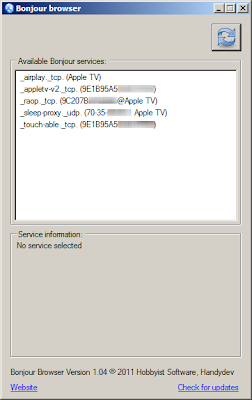My Apple & Raspberry Pi(e)

Apologies for the appalling title of this blog post, but hey, you're here! :) In this post I talk about my purchase of a Raspberry Pi (by devious means) and how I set it up as an iPerf server. I have recently been reading lots about the Raspberry Pi mini/micro/teeny-weeny ( I don't know what the correct term is...) single board computer, which has been created by the Raspberry Pi Foundation in a attempt to promote the teaching of basic computer science in schools (according to Wikipedia ). I've been itching to get my hands on one for a while and finally came up with a great excuse to buy one and have a play with it. They're incredibly cheap (around £30 for the basic computer board), so I concocted a flimsy excuse about buying one to teach my son about computing. After letting him play with it (and get bored) for about 30 minutes, I quickly slipped in to my home lab where I will no doubt continue to 'evaluate' it. The Pi is supplied with a flavour of Debia...



